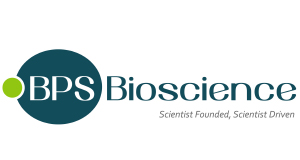NF-κB Luciferase Reporter A549 Cell Line
NF-κB Luciferase Reporter A549 Cell Line
SKU
BPS60625
Packaging Unit
2 vials
Manufacturer
BPS Bioscience
Availability:
loading...
Price is loading...
Products from BPS Bioscience require a minimum order value above 400€
Application: The NF-κB-luciferase / A549 cell line is suitable for monitoring the activity of NF-κB transcription factor through luminescence readout instead of using electrophoretic mobility shift assay (EMSA). It provides a platform to enable study of a plethora of
Background: NF-κB signaling plays a pivotal role in regulating cell development and immune homeostasis. Activation of NF-κB through tumor necrosis factor receptors (TNFR) or the TNFR superfamily member CD40 occurs upon engagement with their respective ligands TNFα or CD40L. Activation of NF-κB enhances cell inflammation and prevents apoptosis, which contribute to tumor development. The A549 lung epithelial cell line is ideal in an in vitro lung disease model for high throughput screening of oncogene inhibitors upstream of the NF-κB signaling pathway.
Description: NF-κB luciferase reporter construct is stably integrated into the genome of A549 cells. The firefly luciferase gene is controlled by 4 copies of NF-κB response element located upstream of the TATA promoter. Following activation by stimulants, endogenous NF-κB transcription factors bind to the DNA response elements to induce transcription of the luciferase gene.
Format: Each vial contains ~3 x 106 cells in 1mL of 10% DMSO in FBS.
Host Cell Line: A549
Storage Stability: Store in liquid nitrogen immediately upon receipt.
Warnings: Avoid freeze/thaw cycles.
Biosafety Level: BSL-1
References: 1.Cherfilis-Vicini J. et.al. (2010) Triggering of TLR7 and TLR8 expressed by human lung cancer cells induces cell survival and chemoresistance. J. Clin. Invest. 120: 1285-1297.2.Chen W. et.al. (2011NF-κB, a mediator for lung carcinogenesis and a target for lung cancer prevention and therapy. Front. Biosci. 16: 1172-1185. 3.Callister ME et.al. (2008) PMX464, a thiol-reactive quinol and putative thioredoxin inhibitor, inhibits NF-κB-dependent proinflammatory activation of alveolar epithelial cells. Br. J. Pharm. 155: 661-672.4.Schmeck B et.al. (2007) Legionella pneumophilia-induced NF-κB- and MAPK-dependent cytokine release by lung epithelial cells. Eur. Respir. J. 29: 25-33
Application: The NF-κB-luciferase / A549 cell line is suitable for monitoring the activity of NF-κB transcription factor through luminescence readout instead of using electrophoretic mobility shift assay (EMSA). It provides a platform to enable study of a plethora of
Background: NF-κB signaling plays a pivotal role in regulating cell development and immune homeostasis. Activation of NF-κB through tumor necrosis factor receptors (TNFR) or the TNFR superfamily member CD40 occurs upon engagement with their respective ligands TNFα or CD40L. Activation of NF-κB enhances cell inflammation and prevents apoptosis, which contribute to tumor development. The A549 lung epithelial cell line is ideal in an in vitro lung disease model for high throughput screening of oncogene inhibitors upstream of the NF-κB signaling pathway.
Description: NF-κB luciferase reporter construct is stably integrated into the genome of A549 cells. The firefly luciferase gene is controlled by 4 copies of NF-κB response element located upstream of the TATA promoter. Following activation by stimulants, endogenous NF-κB transcription factors bind to the DNA response elements to induce transcription of the luciferase gene.
Format: Each vial contains ~3 x 106 cells in 1mL of 10% DMSO in FBS.
Host Cell Line: A549
Storage Stability: Store in liquid nitrogen immediately upon receipt.
Warnings: Avoid freeze/thaw cycles.
Biosafety Level: BSL-1
References: 1.Cherfilis-Vicini J. et.al. (2010) Triggering of TLR7 and TLR8 expressed by human lung cancer cells induces cell survival and chemoresistance. J. Clin. Invest. 120: 1285-1297.2.Chen W. et.al. (2011NF-κB, a mediator for lung carcinogenesis and a target for lung cancer prevention and therapy. Front. Biosci. 16: 1172-1185. 3.Callister ME et.al. (2008) PMX464, a thiol-reactive quinol and putative thioredoxin inhibitor, inhibits NF-κB-dependent proinflammatory activation of alveolar epithelial cells. Br. J. Pharm. 155: 661-672.4.Schmeck B et.al. (2007) Legionella pneumophilia-induced NF-κB- and MAPK-dependent cytokine release by lung epithelial cells. Eur. Respir. J. 29: 25-33
| SKU | BPS60625 |
|---|---|
| Manufacturer | BPS Bioscience |
| Manufacturer SKU | 60625 |
| Package Unit | 2 vials |
| Quantity Unit | PAK |
| Application | Electrophoretic Mobility Shift Assay (EMSA) |
| Host | Human |
| Product information (PDF) | Download |
| MSDS (PDF) |
|

 Deutsch
Deutsch






